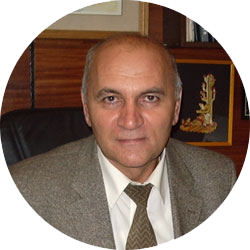
A device to electrochemically treat water.
A device to electrochemically treat water.
Flow-through electrochemical module cell of FEM – 2 type, flow-through elec-trochemical linear reactor of RPE-L type. Ideologically, FEM-2 module is evolution of FEM-1 module. However, technically it is an absolutely new device that essentially dif-fers from its prototype – FEM-1 module. FEM-2 module is the first device with precisely indicated absolute and relative dimensions of electrode chambers (which is crucial for electrochemical treatment of low-mineralized electrolyte aqueous solutions and fresh water) that also considerably decreases the risk of bi-polar areas’ emergence on elec-trode surfaces. The device can be commercially manufactured using plastic collectors made not with the help of lathe as in case of FEM-1 module, but by casting plastic parts in press-molds. That was achieved thanks to a different structure of collector head end-points and, correspondingly, collector heads themselves.
In the period of legal (that is, in conformity with license agreements and under the authors’ control) manufacture of FEM-2 modules (1992 – 1995), the joint Soviet-British venture EMERALD produced over 100 000 FEM-2 modules, which were em-ployed in STEL, EMERALD and other electrochemical systems.
From 1995, FEM-2 module production, which had been under constant scien-tific and engineering control of the authors up to that time, along with the production of all electrochemical systems fitted with it, was ceased by the authors due to the de-velopment of the third generation of compact electrochemical diaphragm-type reac-tors – FEM-3 modules.

Electrochemical unit of STEL-4N device.
Electrochemical unit of the device is represented by four FEM-2 modules. In 1992, STEL-4N device was approved by the USSR Ministry of Health for commercial manufacture and wide application in medical facilities. The device’s output is 40 l/h of neutral anolyte (AN), consumed electric power is 100 W. Moscow, VNIIIMT, 1992.
